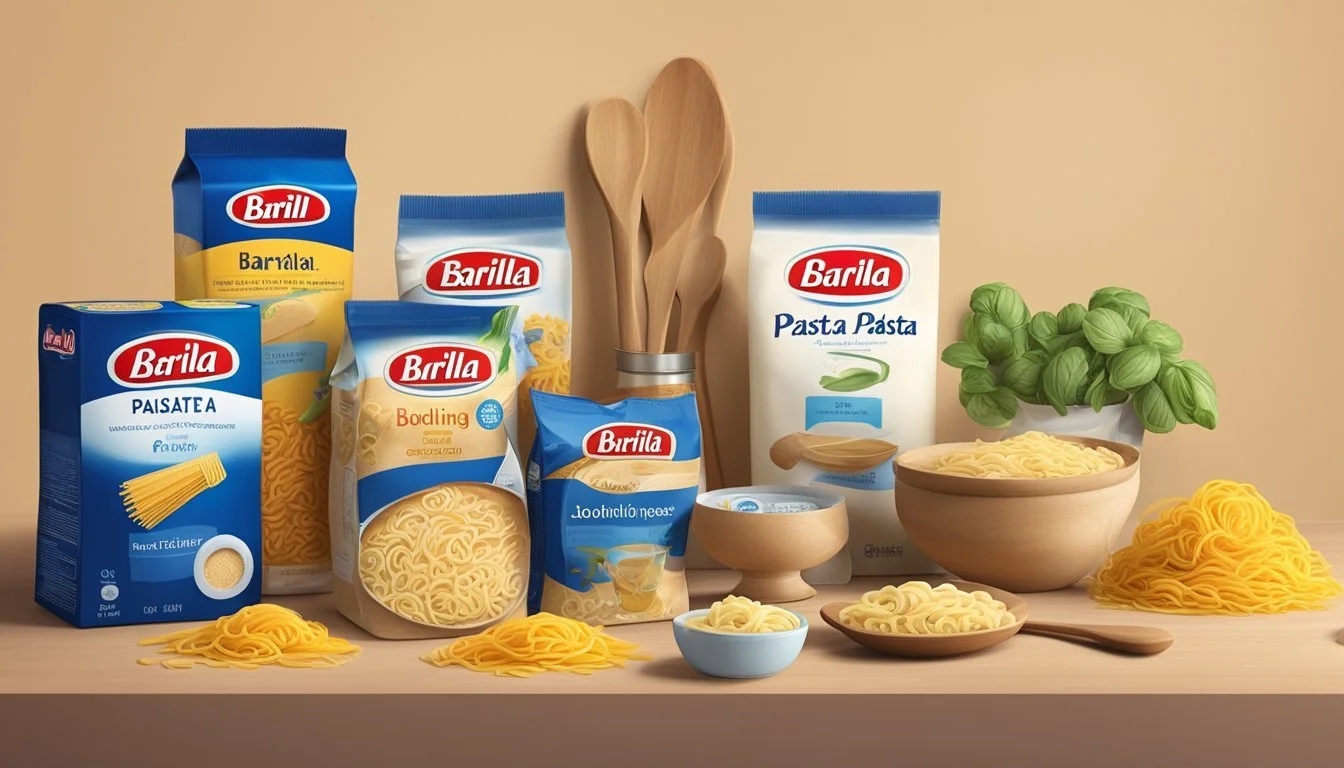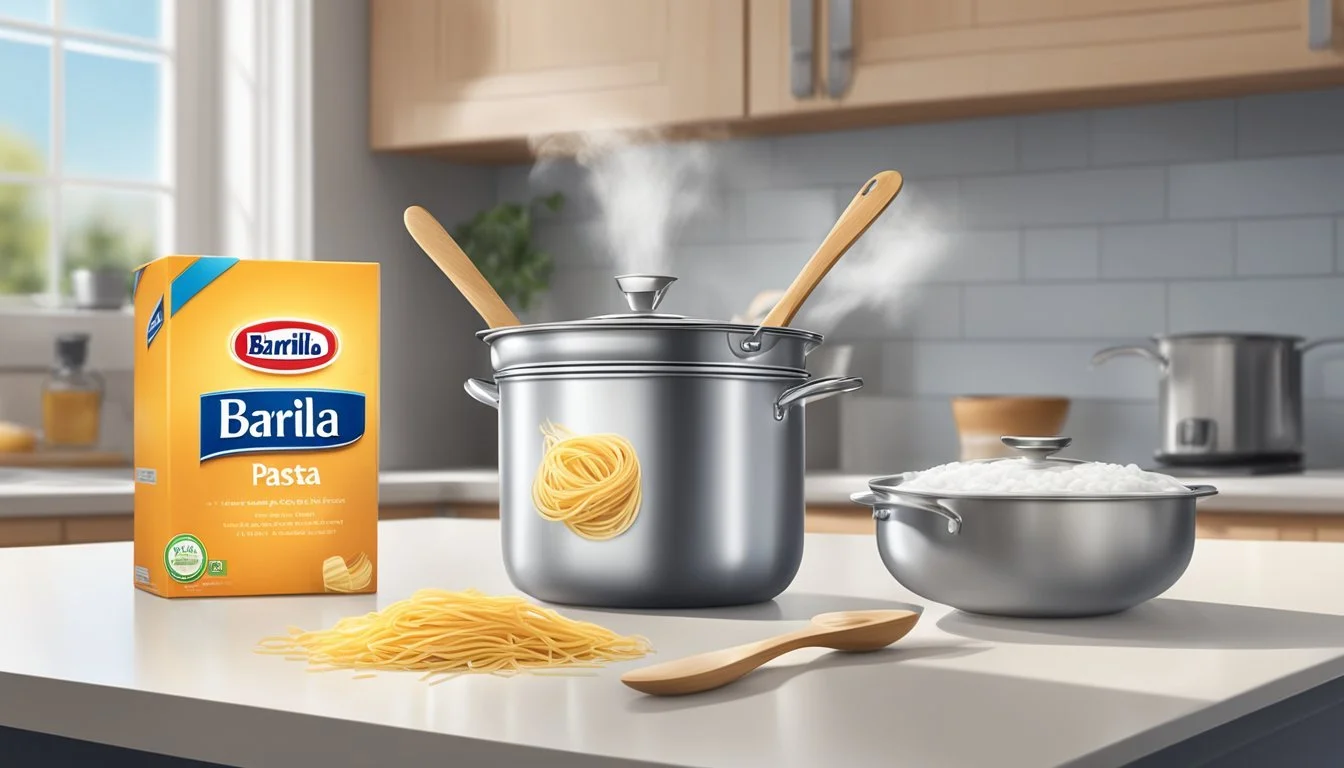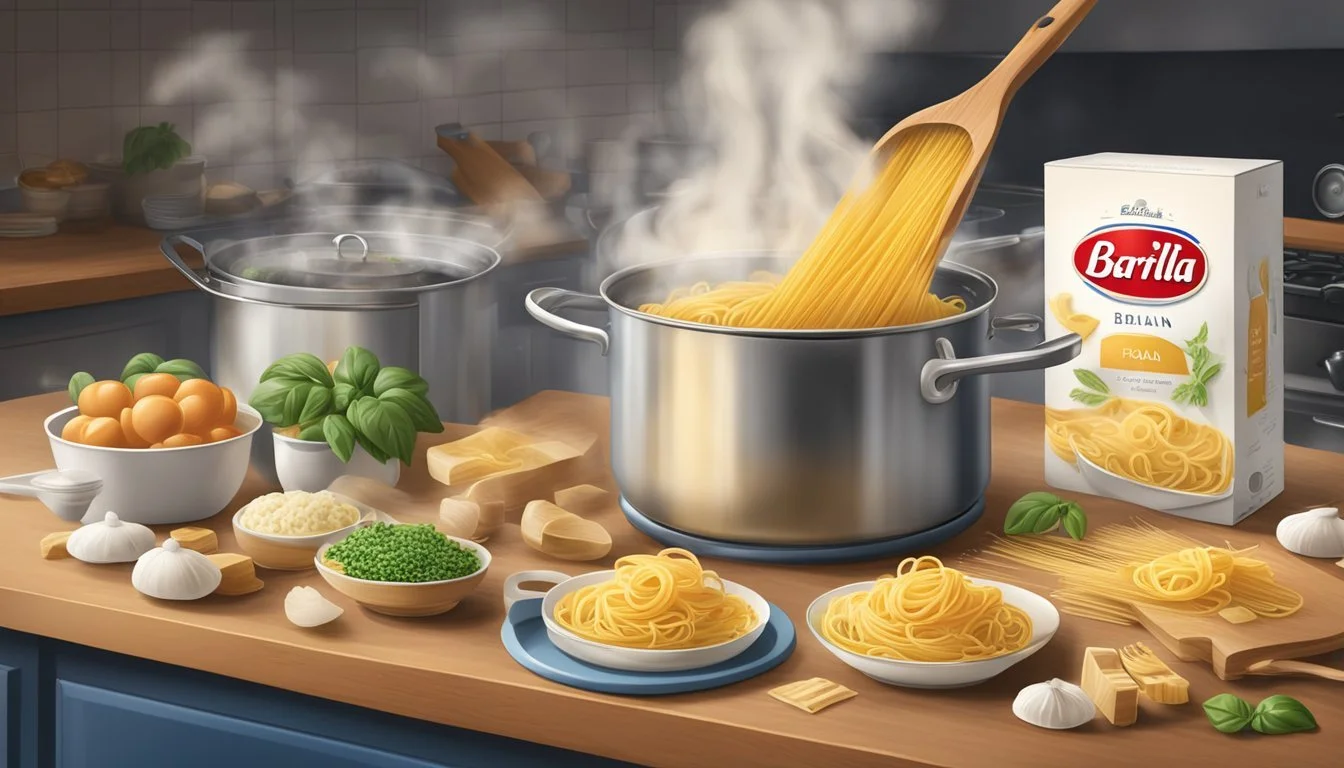How to Cook with Barilla Pasta
Mastering Italian Classics
Cooking with Barilla pasta is a journey into the heart of Italian cuisine, where simplicity meets sophistication. Barilla's range of pasta (What wine goes well with pasta?), crafted from high-quality durum wheat, serves as the foundation for countless Italian classics. From the robust flavors of a Bolognese to the delicate simplicity of Aglio e Olio, the versatility of Barilla pasta allows both novice cooks and seasoned chefs to recreate the rich tapestry of Italian flavors in their kitchens.
The art of pasta making has been perfected by Barilla, a brand that has become synonymous with Italian culinary tradition. Each shape of Barilla pasta is designed to hold sauces in a unique way, enhancing the dining experience. Whether it's the grooves in penne that capture every nuance of a tomato-based sauce or the broad surface of lasagna sheets that provide the ideal layering for cheese and bechamel, Barilla provides an exceptional canvas for these time-honored recipes.
In Italian cooking, the quality of ingredients is paramount, and this ethos is embodied in Barilla pasta. When cooked al dente, which literally means "to the tooth," Barilla pasta maintains its texture and integrity, pairing perfectly with the fresh, vibrant flavors of Italy's regional ingredients. It's this dedication to quality and a deep understanding of the culinary landscape that places Barilla pasta at the heart of Italian cooking, enabling home cooks to imbue their dishes with the spirit and taste of Italy.
Choosing the Right Pasta
Selecting the ideal pasta shape is crucial for the harmony of ingredients and the success of an Italian classic dish. Specific shapes pair better with certain sauces and ingredients, enhancing the final culinary experience.
Understanding Pasta Shapes
Spaghetti is long and thin, making it a match for light or oil-based sauces such as aglio e olio or marinara. Linguine, slightly flatter than spaghetti, works well with seafood and pesto sauces. Fettuccine, with its ribbon-like appearance, is ideal for thicker, creamier sauces such as Alfredo due to its wider surface area which carries sauces with more body.
For robust and chunky sauces, one might choose shapes like penne or rotini. These shapes have ridges and holes which are adept at trapping and holding sauces, such as arrabbiata or bolognese. The tubular shape of penne also helps in retaining sauces inside, offering a burst of flavor with each bite. Feathered farfalle, often known as bow-tie pasta, is perfect for both light and richer sauces, with its pinched middle creating a texture contrast.
Selecting Barilla Pasta Varieties
Barilla offers a wide range of pasta varieties to suit the needs of different dishes. Their options include classic durum wheat pasta, whole-grain alternatives, and gluten-free options, amongst others.
Durum Wheat Pasta: Barilla's classic range is made from high-quality durum wheat which ensures the pasta stays firm and al dente.
Whole Grain Pasta: Offering a nuttier flavor and additional fiber, Barilla's whole grain pasta is an excellent health-conscious choice without sacrificing texture.
Gluten-Free Pasta: For those with dietary restrictions, Barilla provides gluten-free pasta that aims to closely mimic the taste and texture of traditional pasta.
When selecting a Barilla pasta variety, consider the sauce and overall flavor profile of your dish. Pairing the correct Barilla pasta shape with the right sauce can elevate an Italian classic, making the meal memorable.
Preparation Basics
For the classic Italian pasta dishes (What wine goes well with pasta dishes?), starting with the right water to pasta ratio and proper salting of the water is crucial. These two elements lay the foundation for achieving the quintessential al dente texture that makes Barilla pasta shine.
Measuring Water Ratio
The optimal water ratio for cooking pasta is about 4 quarts (16 cups) of water to 1 pound of pasta. It is important to ensure that the pasta has enough room to move freely, preventing it from sticking together.
Adding Salt to Water
Salt is vital in pasta water as it seasons the pasta internally as it cooks. For every pound of pasta, add approximately 2 tablespoons of salt to the boiling water. This doesn't make the pasta salty but is essential for bringing out its natural flavors.
Cooking the Pasta
Cooking pasta requires precise timing and techniques to achieve the quintessential al dente texture. Barilla pasta, celebrated for its quality and consistency, is no exception. Adherence to a few key steps can make the difference between mediocre and exceptional pasta dishes.
Boiling the Water
It is crucial to start with a large pot filled with plenty of water; typically, one should use about 4-6 quarts of water for each pound of pasta. Bringing the water to a full rolling boil before adding the pasta is necessary to ensure that the pasta cooks evenly and does not stick together.
The Art of Al Dente
The term al dente refers to pasta that is cooked to be firm to the bite, which is the ideal texture for Italian pasta dishes. To achieve al dente Barilla pasta, one must adhere to the recommended cooking times provided on the pasta package, as it varies by pasta shape and size.
Testing for Doneness
Testing for doneness is best done as the pasta nears the end of its cooking time. Remove a piece of pasta from the water, allow it to cool slightly, and then taste it. It should be slightly resistant in the center when bitten.
Using Cooking Water
The starchy cooking water is a valuable component when finishing sauces. It helps the sauce cling to the pasta and can be used to adjust the sauce's consistency. Reserve about a cup of cooking water before draining the pasta, then add it to the sauce as needed to achieve the desired thickness.
By ensuring each of these steps is followed with precision, the pasta will contribute to a robust and authentic Italian culinary experience.
Creating Flavorful Sauces
When it comes to Italian classics, the soul of the dish often lies in its sauce. Made with a variety of ingredients, from robust tomatoes to fresh herbs, these sauces can transform the simplest Barilla pasta into a memorable meal.
Classic Tomato Sauce
One begins with high-quality crushed tomatoes as the foundation of a Classic Tomato Sauce. In a large saucepan, one should heat olive oil on medium. Garlic, finely minced, and a pinch of red pepper flakes are sautéed to release their fragrant aromas. The tomatoes are then poured in, seasoned with salt and pepper, and left to simmer on low heat. Regular stirring is crucial as the sauce thickens and infuses over a 20-minute period.
Olive Oil-Based Sauces
For an Olive Oil-Based Sauce, the simplicity of quality olive oil is key. It serves as a base that carries flavors such as garlic, anchovies, (What wine goes well with anchovies?) or capers. (What wine goes well with capers?) One may start with gently heating olive oil with selected ingredients to flavor the oil before tossing it with perfectly cooked Barilla pasta. This quick and light sauce option pairs wonderfully with thinner pasta shapes that can cling to the oil.
Herb and Vegetable Infusions
Herb and Vegetable Infusions bring a fresh and vibrant dimension to pasta dishes. Fresh herbs such as basil, parsley, or oregano add brightness, while sautéed vegetables like onions, zucchini, or bell peppers add depth and body. For a flavourful sauce, one should slowly cook vegetables until they are golden and soft, then finely chop the desired herbs to blend into the sauce towards the end of cooking to preserve their fresh taste and color.
Completing the Dish
In Italian classics, the final steps of incorporating protein and adding cheese and herbs are crucial, as they transform cooked pasta into a complete, flavorful dish.
Incorporating Protein
To bring a dish to life, one often includes a source of protein. For Italian cuisine, choices like Italian sausage or meat—whether it's ground beef, chicken, or seafood—are popular. In preparing the protein, it should be cooked thoroughly before combining with pasta. If one opts for Italian sausage, they may cook it in a pan until it's evenly browned and then slice it into bite-sized pieces to be tossed with the pasta.
Adding Cheese and Herbs
Cheese is the linchpin in many Italian pasta dishes, providing a burst of flavor and a creamy texture. Generously sprinkle grated Parmesan cheese over the hot pasta to allow it to melt slightly and integrate into the dish. For the most aromatic results, one should use freshly ground Parmesan.
Herbs, particularly fresh basil and parsley, are also essential. They should be finely chopped and added to the dish at the end of cooking to preserve their vibrant color and taste. The table below summarizes the recommended use of cheese and herbs:
Ingredient Use Parmesan Cheese Grated over pasta for flavor and texture Fresh Basil Chopped and sprinkled for a fresh, aromatic flavor Parsley Chopped and added for a burst of color and subtle flavor
By attending to these details, the dish receives its finishing touches, perfectly complementing the al dente Barilla pasta and ensuring an authentic Italian experience.
Special Considerations
When cooking Italian classics with Barilla pasta, one should always consider dietary restrictions and the cooking method to ensure optimal results. Particular attention should be given to gluten-free options for those with sensitivities, and the adaption of recipes to modern cooking appliances like the Instant Pot can save time and energy.
Gluten-Free Options
When selecting Barilla pasta for gluten-free diets, ensure to choose products specifically labeled as "gluten-free." Barilla offers a variety of gluten-free pasta made from non-wheat ingredients like corn and rice which are designed to provide a taste and texture comparable to traditional pasta. Those cooking for gluten-sensitive individuals must also prevent cross-contamination by using separate cooking utensils and pots.
Cooking with an Instant Pot
Cooking Barilla pasta in an Instant Pot can substantially reduce the preparation time without sacrificing quality. To achieve al dente pasta, use the manual setting and adjust the cooking time to be half of the recommended time on the Barilla pasta package. Ensure you have enough liquid, typically water or broth, to fully submerge the pasta. This method is especially convenient for one-pot meals, allowing the flavors to meld together under pressure.
Plating and Presentation
Executing flawless plating and presentation can transform a delicious and comforting meal into a work of art, with the texture playing a critical role in the dining experience.
Garnishing for Aesthetics
To garnish Barilla pasta, one must consider both color and balance. A sprinkle of finely chopped parsley or basil adds a fresh, green pop. Freshly grated Parmesan or a few drops of high-quality olive oil can enhance both the look and flavor. The objective is to complement the pasta's natural appeal without overwhelming it.
Color Contrast: Bright herbs, red pepper flakes
Texture Contrast: Crushed nuts, bread crumbs
Flavor Boost: Citrus zest, infused oils
Achieving the Perfect Texture
The perfect texture of pasta is 'al dente' – firm to the bite. Achieving this begins with cooking Barilla pasta in a large pot of salted, boiling water for the recommended time on the package, typically around 9-11 minutes, to avoid overcooking. Rapidly cool any pasta that won’t be served immediately to retain its hearty texture.
Boiling: Use ample water, typically 4-6 quarts per pound of pasta.
Timing: Start testing a couple of minutes before the time range suggested on the package.
Finishing: After draining, a touch of olive oil can prevent sticking and preserve texture.
Pairing Suggestions
Creating a satisfying Italian meal with Barilla pasta involves complementing it with the right sides and beverages. One should consider the meal's flavors, textures, and ingredients to achieve a harmonious dining experience.
Choosing Complementary Sides
To construct a comforting meal, selecting sides that balance the pasta's richness with lighter textures and flavors is essential. For instance, Barilla pasta combined with a robust sauce is elegantly balanced by a side of sautéed vegetables. A list of complementary side options might include:
Grilled Vegetables: Zucchini, bell peppers, and asparagus offer a smoky, charred flavor that contrasts nicely with the pasta's soft texture.
Beans: For a protein boost, sides like white bean salad or chickpeas dressed in vinaigrette can complement the meal. They offer both nutritional value and a satisfying bite.
Fresh Salad: A simple arugula salad with a squeeze of lemon, extra virgin olive oil, and shavings of Parmigiano-Reggiano can cut through the richness of a creamy pasta dish.
Selecting the Right Beverage
A carefully chosen beverage can enhance the flavors of a pasta dish. Here's how to pair Barilla pasta with the perfect drink:
Red Wine: Full-bodied red wines such as Chianti or Barolo are excellent with tomato-based sauces, (What wine goes well with tomato-based sauces?) as their tannins cut through the acidity.
White Wine: Lighter pasta dishes, especially those featuring seafood, pair well with crisp white wines like Pinot Grigio or Sauvignon Blanc.
Sparkling Water: For those preferring a non-alcoholic option, sparkling water with a wedge of lemon or lime complements any pasta dish without overpowering it.
Using quality ingredients in both the pasta and the pairings ensures each component of the meal contributes to a delightful and authentic Italian culinary experience.
Storing and Reheating
Proper storage and reheating of Barilla pasta ensure that the quality of this versatile ingredient remains intact. Close attention to leftovers keeps dishes appetizing and safe to consume.
Best Practices for Leftovers
Leftovers should be addressed promptly to maintain their best quality. For cooked pasta without sauce, it's vital to store it in an airtight container and refrigerate. To prevent pasta from becoming sticky, one can coat it lightly with extra-virgin olive oil. Here are the recommended steps:
Refrigeration: Store the pasta within two hours of cooking.
Airtight Containers: Transfer to a container that can properly seal out air.
Olive Oil: Toss lightly with oil if not already mixed with sauce.
Consumption: Aim to eat the leftovers within 48 hours for optimal freshness.
Maintaining Quality Over Time
When reheating pasta, the goal is to preserve the texture and flavor that exemplify high-quality ingredients. For plain pasta, reheating techniques vary slightly:
In the Microwave:
Place the pasta in a microwave-safe dish.
Add a bit of water or sauce to add moisture.
Cover and heat, stirring occasionally until the dish reaches 165°F.
On the Stovetop:
Add the pasta to a pan with a light splash of water.
Cover and cook on medium heat until thoroughly heated.
Proper reheating allows for serving leftovers that are nearly as good as when they were first prepared, with the pasta retaining its intended texture and flavor profile.







